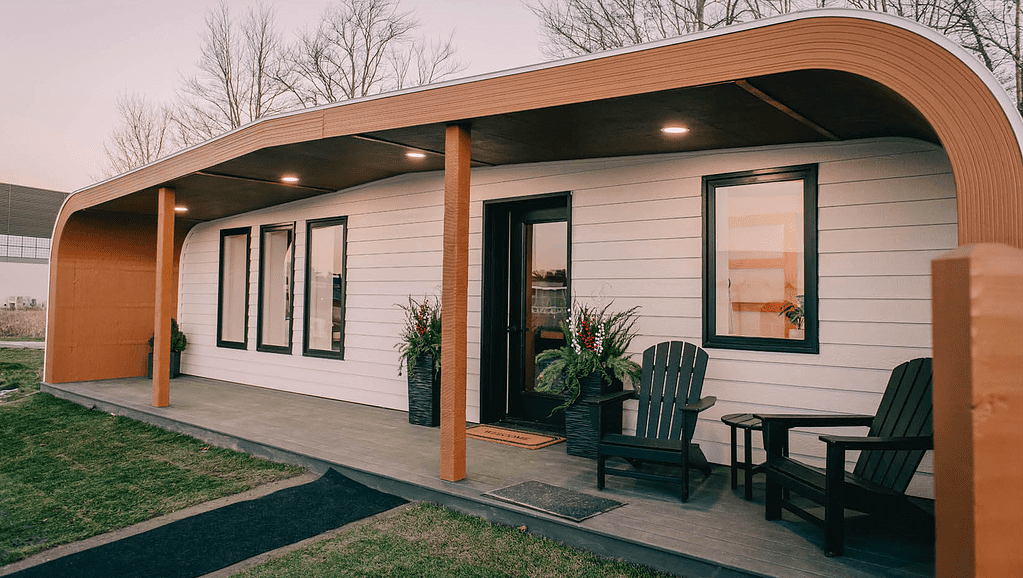We’ve seen 3D-printed houses in the past before, and we’ve even seen that they can already be cost-competitive with conventional houses. But those houses were 3D-printed with concrete. Meanwhile, researchers from the University of Maine have unveiled a

The entire structure was printed in four modules and assembled on-site in a few hours. Electricity was installed just two hours after the assembly, and the house was essentially usable within a day after being brought on-site.
The house features 3D-printed floors, walls, and a roof that consist of wood fibers and bio-resins. The entire house measures 600 square feet (just under 60 meters) and is insulated with wood. The building process eliminated construction waste almost entirely, and unlike concrete houses (both conventional and 3D printed houses), this one can be fully recycled.
The official presentation of the bio-printed house was made with fanfare, with university as well as government officials present at the site.
“Our state is facing the perfect storm of a housing crisis and labor shortage, but the University of Maine is stepping up once again to show that we can address these serious challenges with trademark Maine ingenuity,” said Gov. Janet Mills. “With its innovative BioHome3D, UMaine’s Advanced Structures and Composites Center is thinking creatively about how we can tackle our housing shortage, strengthen our forest products industry, and deliver people a safe place to live so they can contribute to our economy.”
Indeed, the advent of 3D-printed houses couldn’t come at a better time. With the pandemic causing massive disruption in supply chains, construction materials have surged in price over the past couple years. There’s also a worker shortage and we’re headed for a potential global recession — so having access to easily built and affordable housing has never been more important.
However, it’s not clear just yet how affordable this house would be. It’s still a prototype, and the researchers focused on creating it using recycled, locally sourced wood fiber feedstock. This makes it more resilient to disruptions from supply chains and worker shortages.
“Many technologies are being developed to 3D print homes, but unlike BioHome3D, most are printed using concrete. However, only the concrete walls are printed on top of a conventionally cast concrete foundation. Traditional wood framing or wood trusses are used to complete the roof,” said Dagher, ASCC executive director. “Unlike the existing technologies, the entire BioHome3D was printed, including the floors, walls, and roof. The biomaterials used are 100% recyclable, so our great-grandchildren can fully recycle BioHome3D.”
Ultimately, though, as promising as this technology is, it’s going to boil down to cost and durability. Having a 3D-printed house is pretty cool, but no one really wants to pay more for a house and/or face structural problems down the line. But if 3D-printing can make durable, cheap, bio-based homes — it could be a massive game changer.



